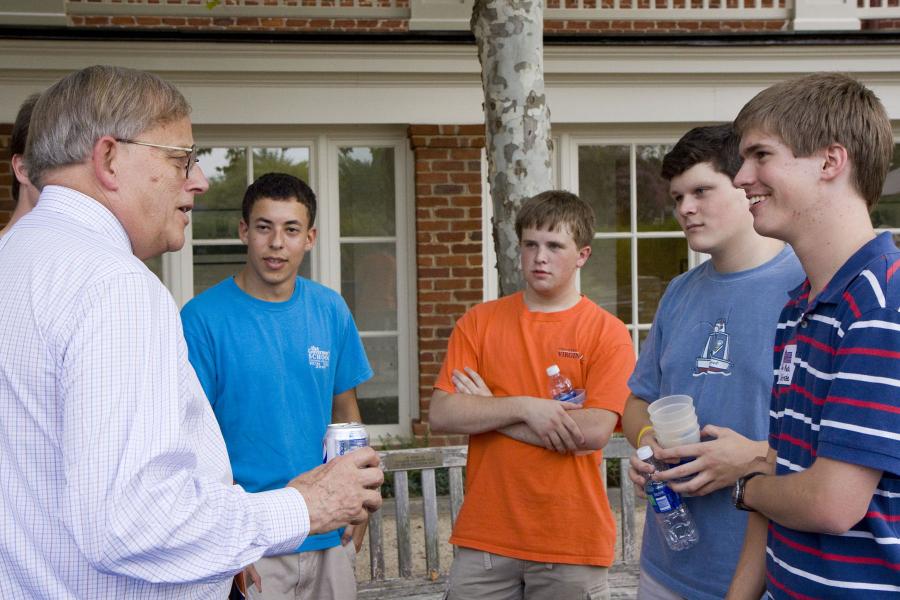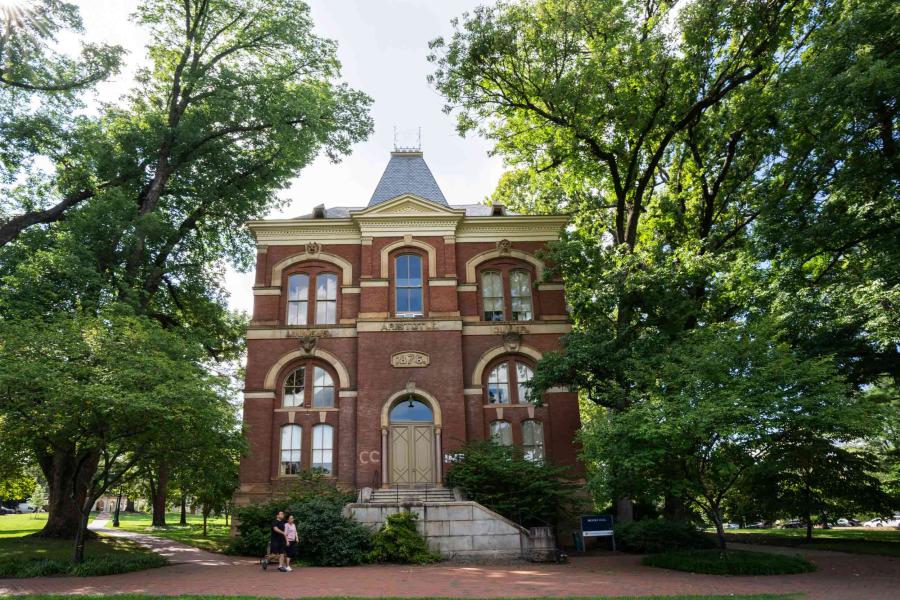Memorial Gymnasium, the center of athletic and social life at the University of Virginia for a large segment of the 20th century, is getting a facelift.
‘If These Walls …’ Mem Gym Has Hosted Champions, Icons and Celebrities
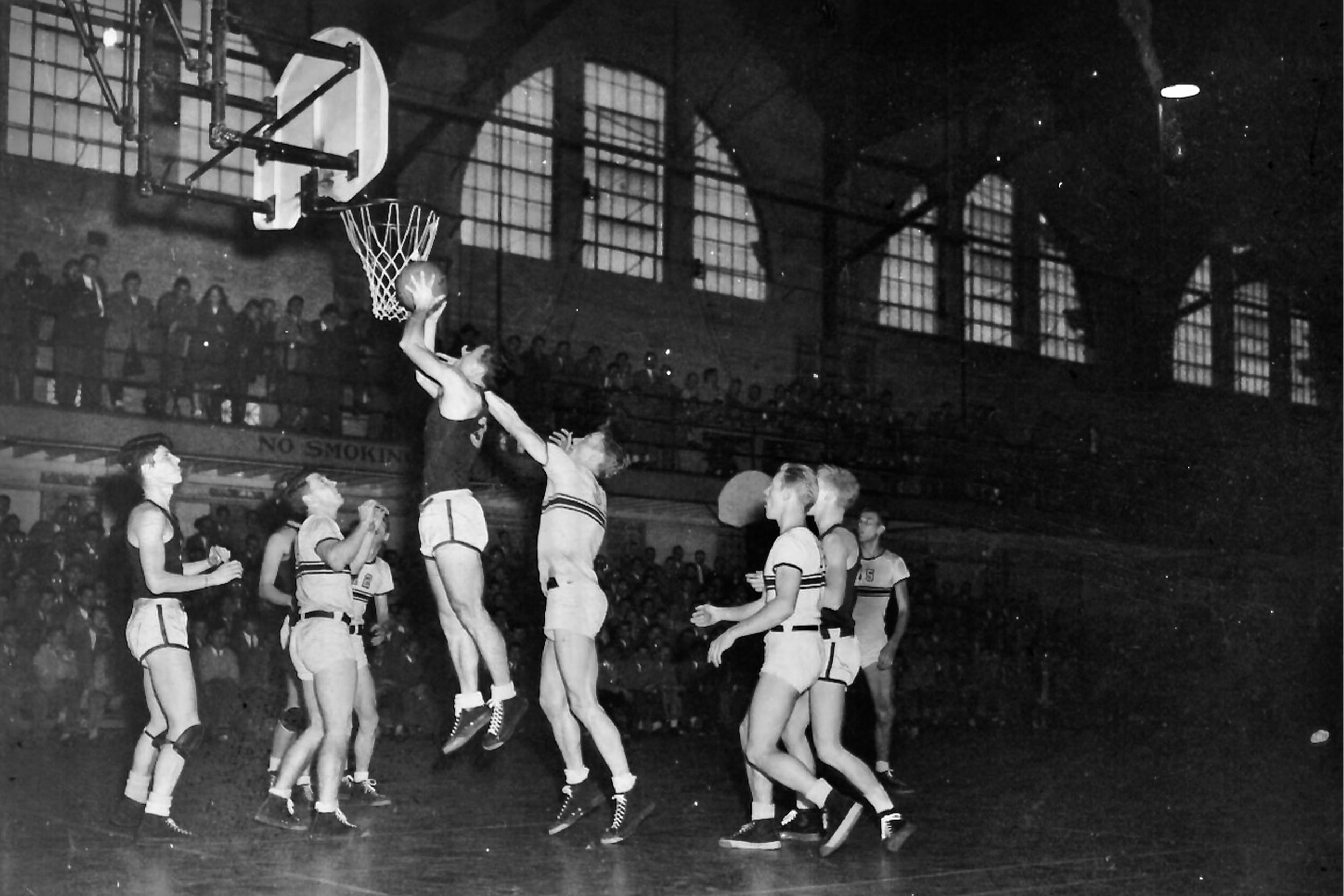
Memorial Gymnasium was the home of Cavalier basketball for years, until University Hall was built. (UVA Visual History Collection, Special Collections, University of Virginia Library)
A 2019 survey of the gymnasium’s exterior revealed water damage and cracks in its masonry, cast stone and stucco elements. The renovation project, which has wrapped the building in scaffolding, is repairing the damage, including replacing the pedestals on top of the east-west façade capitals, replacing roof capstones and flashing, repointing masonry and patching stucco and concrete bands.
The modern touch-up on an old building presented UVA Today with an opportunity to glance through the storied history of the structure, much of it catalogued in decades of intriguing photographs.
Memorial Gymnasium, or “Mem Gym” to students and decades of alumni, opened in 1924. It was proposed as a memorial to the 80 students and alumni who died in World War I.
Modeled after the Roman Baths of Caracalla and Baths of Diocletian, Memorial Gymnasium was designed by an architectural commission led by Fiske Kimball, the first head of UVA’s Department of Art and Architecture, forerunner of both the Art Department and the School of Architecture.
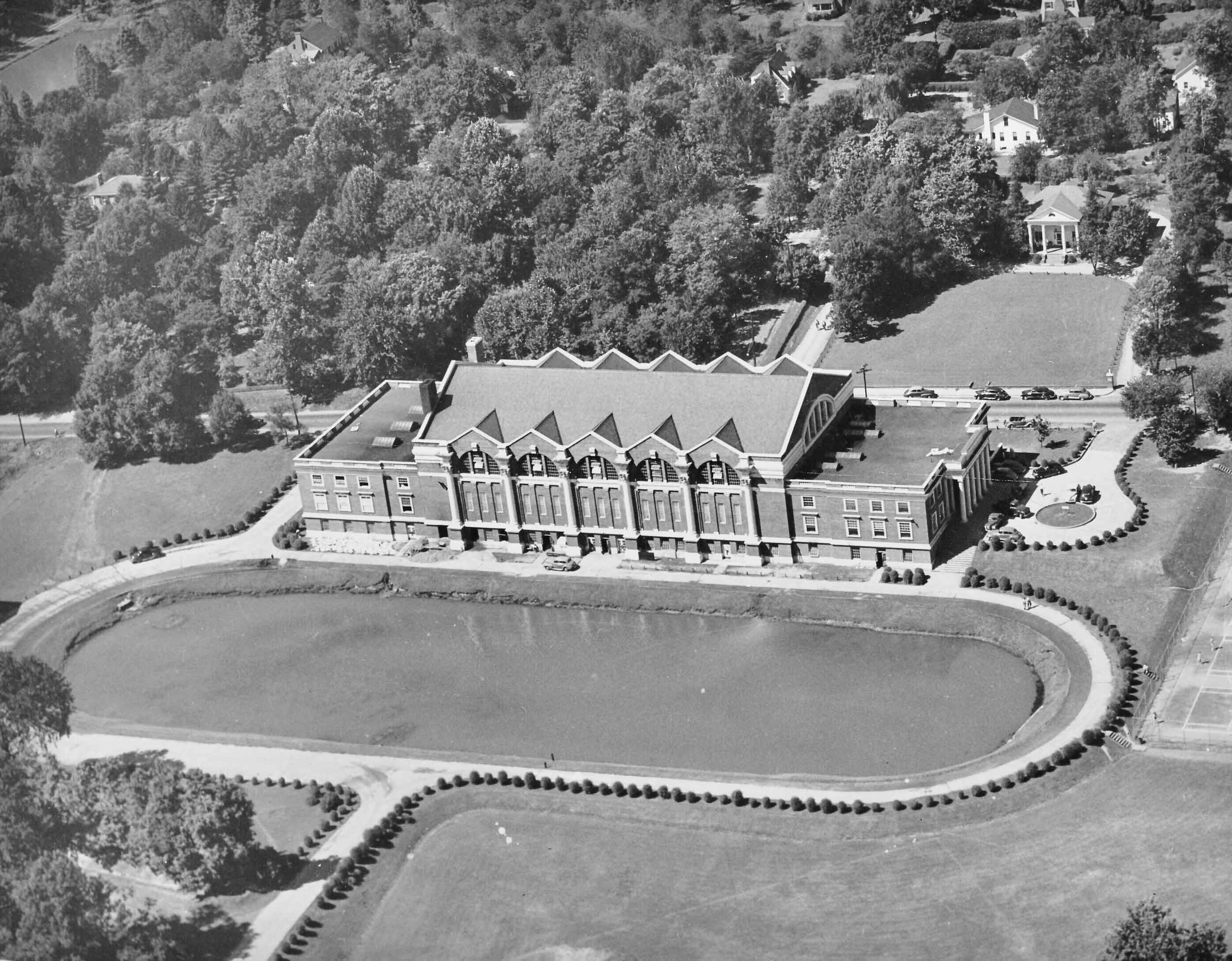
Memorial Gymnasium as it looked from the air before 1952, when the pond was filled in. (Photo by Ralph R. Thompson, courtesy UVA Visual History Collection, Special Collections, University of Virginia Library)
“The gymnasium drew inspiration from the architecture of ancient Rome as much as from Jefferson’s Academic Village,” noted a Historic Preservation Framing Report prepared for the University in 2007. “Indeed, the Diocletian reference of the great windows and the very term ‘gymnasium’ evoked ancient associations consonant with the classical vision of University Beautiful proponents.”
The main floor of the building measures 180 by 96 feet, with a 10-foot-wide, banked running track suspended above the playing surface, and lockers and quarters for home and visiting teams. The original structure had a 30-by-75-foot swimming pool, which was removed in 2007. The initial design had lecture rooms, a trophy room, boxing, fencing and wrestling rooms.

Memorial Gymnasium is the renovated and updated home for UVA volleyball in the fall, but in years past it hosted boxing matches, swimming and basketball along with other University events. (UVA Athletics photo)
While designed as an athletic venue, it was also a social hall, hosting dances, dinners, concerts, class registrations and a variety of other functions, including graduations. President Franklin D. Roosevelt spoke at graduation there on June 10, 1940, a talk that became known as the “Stab in the Back” speech, in which he announced that Italy had allied itself with Germany in the European war.
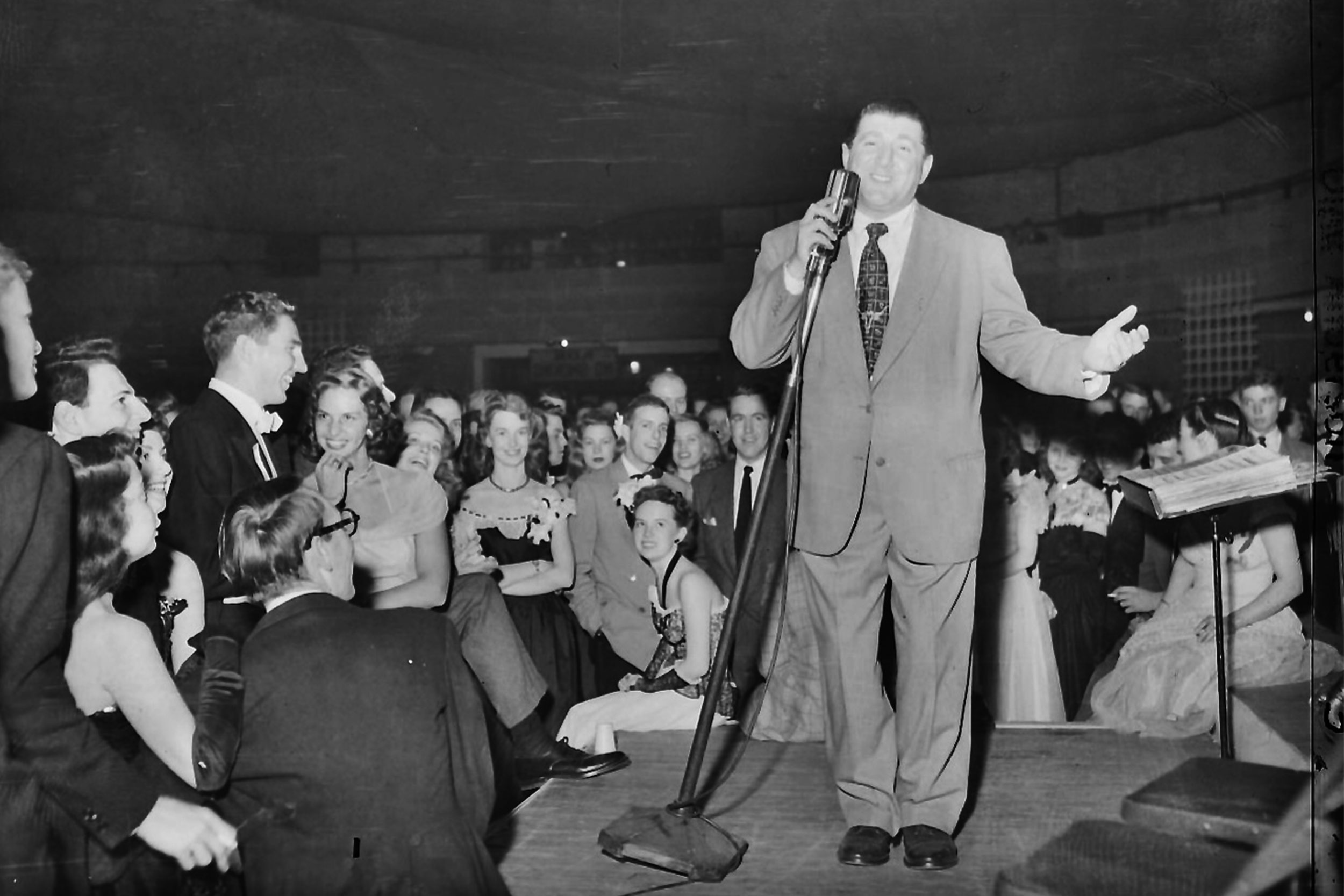
Musicians who performed at Mem Gym included Tommy Dorsey; Ziggy Elman; Duke Ellington; Charlie Spivak; Tony Bennett; Odetta; Ray Charles; Miriam Makeba; Peter, Paul and Mary; and Chuck Berry.
A pond, dug on the east side of the gymnasium, was used for ice skating in the winter. It was drained in 1952. Today the building is flanked by Nameless Field and the Snyder Tennis Courts.
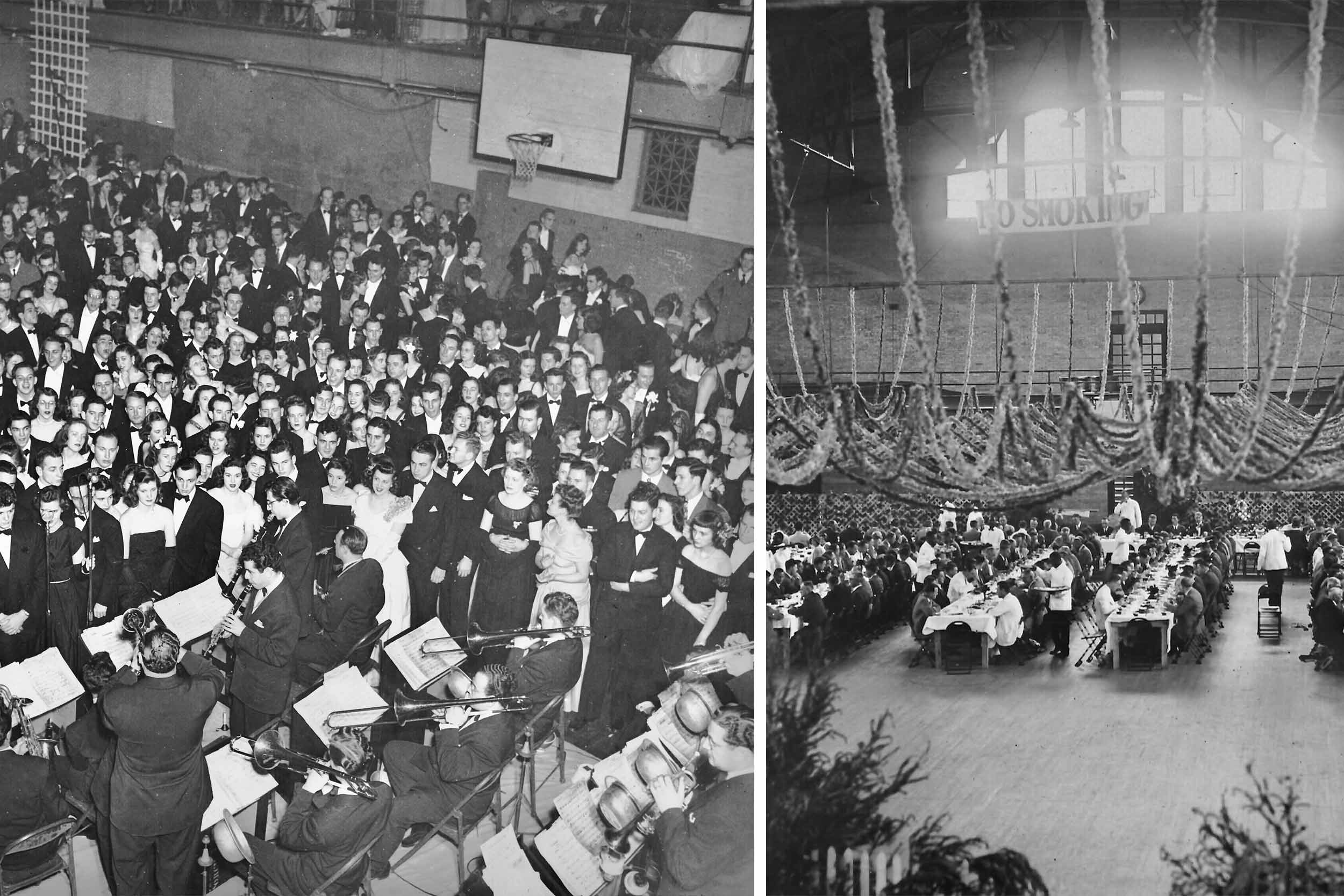
Formal dances were held four times a year in Memorial Gymnasium, with dancers at Midwinters taking time out to listen to Ziggy Elman of the Tommy Dorsey, lower left, band, while also hosting a 1937 Finals Weekend celebration.. (Photo by Ralph R. Thompson, courtesy UVA Visual History Collection, Special Collections, University of Virginia Library) (University of Virginia Visual History Collection, Special Collections, University of Virginia Library)
Mem Gym was also home for many Cavalier athletics teams, including the boxing, wrestling, swimming and basketball squads. Basketball migrated to University Hall when it opened in 1965, and swimming shifted to a pool in Onesty Hall, adjacent to University Hall (and in 1996 to the then-new Aquatics and Fitness Center). Boxing was a big draw at Memorial Gymnasium for decades, but disappeared from UVA as an intercollegiate sport in 1955.
Still a center for athletics, Memorial Gymnasium currently hosts the Cavalier wrestling and volleyball teams, as well as intramural sports.
Media Contacts
University News Associate Office of University Communications
mkelly@virginia.edu (434) 924-7291






